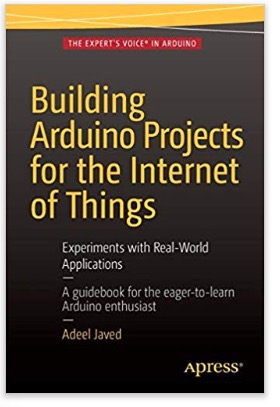Recent Posts
Building Arduino-Based Projects For The Internet Of Things (IoT)
Posted by on
Gain a solid foundation of Arduino-based device development, from which you can go in any direction according to your specific development needs and desires. You will build Arduino-powered devices for everyday use, and then connect those devices to the Internet.
This book introduces the building blocks of IoT, and then you can deploy those principles by building a variety of useful projects.
Projects in the books continuously introduce the reader to critical topics such as internet connectivity with Arduino, common IoT protocols, custom web visualization, and Android apps that receive sensor data on-demand and in real-time.
If you're one of the many who have decided to build your own Arduino-powered devices for IoT applications, then Building Arduino Projects for the Internet of Things is what you need.
This book is your single resource - a guidebook for the eager-to-learn Arduino fan - that teaches logically, methodically, and practically how the Arduino works and what you can build with it.
Written by a software developer and solution architect who got tired of hunting and gathering various lessons for Arduino development as he taught himself all about the topic.
For Arduino enthusiasts, this book not only opens up the world of IoT applications but you will also learn various techniques that likely would not be obvious if not for experience with such a diverse group of applications.
The IoT: Building Arduino-Based Projects course will take you on a tour to become an expert in the use of IoT by developing a set of projects and will guide you through securing your IoT environment.
In the first module, Learning Internet of Things, you will learn how protocols and patterns can put limitations on network topology. You will also learn how the existing protocols, communication patterns, architectures, and security issues are important to the Internet of Things.
The second module, Internet of Things with Arduino Blueprints, provides eight projects that will allow devices to communicate with each other, access information over the Internet, store and retrieve data, and interact with users, creating smart, pervasive, and always-connected environments.
It has become critical to ensure that cybersecurity threats are kept to a minimum when implementing new IoT services and solutions. Thus, our third module, Practical Internet of Things Security provides a set of guidelines to architect and deploy a secure IoT in your enterprise. The aim is to showcase how IoT is implemented in early adopting industries.
 Loading... Please wait...
Loading... Please wait...


